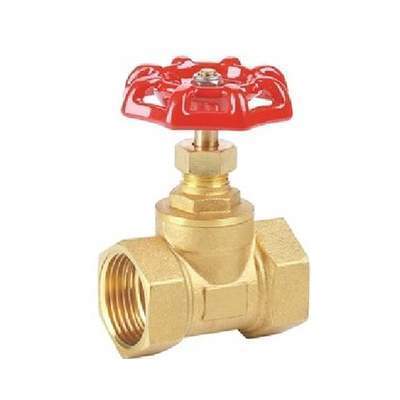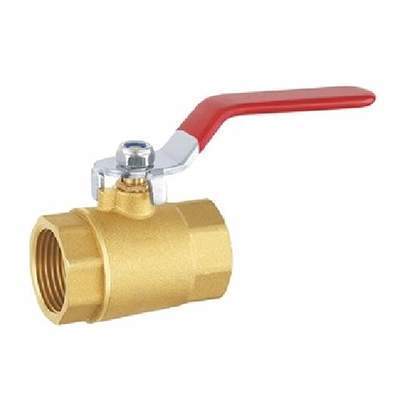Welcome to My Blog!
Before we dive into the content, I’d love for you to join me on my social media platforms where I share more insights, engage with the community, and post updates. Here’s how you can connect with me:
Facebook:https://www.facebook.com/profile.php?id=61563865935136
Now, let’s get started on our journey together. I hope you find the content here insightful, engaging, and valuable.
Introduction

When it comes to plumbing systems, the reliability and longevity of your components are paramount. Among these crucial components, the copper water line valve plays a pivotal role in controlling the flow of water throughout your home or business. Selecting the right copper water line valve can prevent costly leaks, ensure efficient water management, and contribute to the overall durability of your plumbing infrastructure. This guide aims to provide a comprehensive overview of how to choose the appropriate copper water line valve for your specific needs.
Understanding the Importance of a Quality Copper Water Line Valve
A copper water line valve is more than just a simple on/off switch. It is a critical component that regulates water flow, isolates sections of your plumbing system for maintenance, and provides essential safety features. A high-quality copper water line valve offers several benefits:
- Durability: Copper is a naturally corrosion-resistant material, ensuring a long lifespan for your valves.
- Reliability: A well-made valve provides consistent performance, minimizing the risk of leaks and failures.
- Safety: Proper valve function is essential for preventing water damage and ensuring the safe operation of your plumbing system.
Types of Copper Water Line Valves
Choosing the right type of copper water line valve is essential for optimal performance. Here are some common types:
- Ball Valves: These valves use a spherical ball with a hole in the center to control water flow. They offer excellent flow control and are known for their durability.
- Gate Valves: Gate valves use a wedge-shaped gate that moves up and down to control flow. They are ideal for applications where flow regulation is not frequently required.
- Globe Valves: Globe valves are designed for throttling flow and are commonly used in applications where precise flow control is necessary.
- Check Valves: Check valves prevent backflow, ensuring that water only flows in one direction.
Factors to Consider When Choosing a Copper Water Line Valve
Selecting the appropriate copper water line valve involves careful consideration of several factors:
- Size and Compatibility: Ensure that the valve size matches your existing plumbing pipes.
- Pressure Rating: Choose a valve with a pressure rating that meets or exceeds the maximum pressure in your plumbing system.
- Temperature Rating: Consider the temperature of the water flowing through the valve, especially in hot water systems.
- Application: Select a valve type that is suitable for your specific application, whether it’s for general water supply, irrigation, or industrial use.
- Connection Type: Copper water line valves commonly use threaded, soldered, or compression fittings. Choosing the right connection type is very important.
Installation and Maintenance of Copper Water Line Valves
Proper installation and regular maintenance are crucial for ensuring the longevity and reliability of your copper water line valve.
- Installation: Follow the manufacturer’s instructions carefully and ensure that all connections are secure.
- Maintenance: Regularly inspect valves for leaks or signs of wear. Lubricate moving parts as needed to prevent seizing.
Understanding Valve Specifications
When selecting a copper water line valve, it’s essential to understand the specifications provided by the manufacturer. Here is a table that explains some common specifications:
| Specification | Description | Importance |
|---|---|---|
| Nominal Size | The approximate diameter of the valve’s connection. | Ensures compatibility with plumbing pipes. |
| Pressure Rating (PSI) | The maximum pressure the valve can withstand. | Prevents valve failure under high pressure. |
| Temperature Rating (°F) | The range of temperatures the valve can handle. | Ensures valve integrity in varying temperature conditions. |
| Material | The type of copper or alloy used in the valve’s construction. | Determines the valve’s corrosion resistance and durability. |
| Connection Type | The method used to connect the valve to the pipes (threaded, soldered, compression). | Affects ease of installation and leak prevention. |
| Flow Coefficient (Cv) | A measure of the valve’s efficiency in allowing fluid flow. | Indicates the valve’s ability to handle the required flow rate. |
Troubleshooting Common Copper Water Line Valve Issues

Even with proper installation and maintenance, copper water line valves can sometimes experience issues. Here are some common problems and their solutions:
- Leaks: Leaks can occur at connections or through the valve body. Tighten connections or replace the valve if necessary.
- Sticking: Valves can stick due to mineral buildup or corrosion. Clean or lubricate the valve to restore proper function.
- Reduced Flow: Reduced flow can be caused by debris buildup or valve damage. Clean or replace the valve as needed.
Conclusion
Choosing the right copper water line valve is essential for a reliable and efficient plumbing system. By understanding the different types of valves, considering the relevant factors, and following proper installation and maintenance procedures, you can ensure that your plumbing system operates smoothly for years to come. Investing in a high-quality copper water line valve is a wise decision that can save you time, money, and headaches in the long run.
FAQ
Q: How do I choose the right size copper water line valve?
A: Match the valve size to the diameter of your existing plumbing pipes.
Q: What is the difference between a ball valve and a gate valve?
A: Ball valves use a spherical ball to control flow, while gate valves use a wedge-shaped gate. Ball valves offer better flow control and durability.
Q: How often should I replace my copper water line valve?
A: The lifespan of a valve depends on its quality and usage. Regularly inspect valves for signs of wear and replace them as needed.
